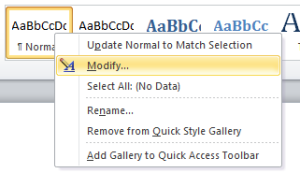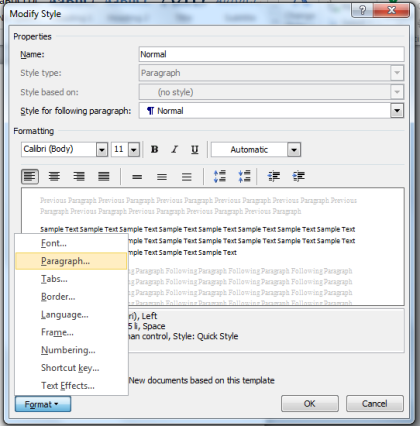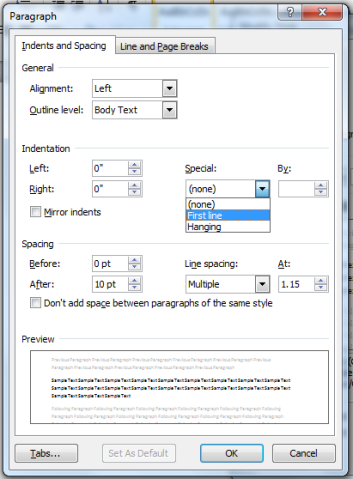Styling Your E-Book With Proper Formatting
Introduction
The use of styles in word processing is a bit esoteric for many users. However, when formatting an e-book, styles can be very handy. With that in mind, I’ll follow-up on last week’s post about formatting by digging a little deeper into what styles are, why they are important to e-book formatting and how to use them. As a reminder, create a back-up copy of your content before formatting so you can easily revert to the original.
Does Your Manuscript Have Style?
So what’s a style and does your book have it? Well, when considering formatting, this is not so much a question of writing style as visual presentation. You don’t want to worry about this while your actually creating your content but when you are formatting styles add, well – style.
Styles, as implied by the term, is a way of changing the appearance of your content. That’s a simple statement but there’s much more to than that. It’s basically using a template of different format settings. In Word this is done via the Styles section of the Home menu. Using different styles means you can change headings, first lines of chapters and other sections of your content when a simple click. It’s very handy when it comes to formatting.
But why should you use it?
Follow Blog via Email
Enter your email address to follow this blog and receive notifications of new posts by email.
The Importance of Styles
Your e-book needs style. It’s like when Kramer (think Seinfeld) found the wide-brimmed hat when he was wearing the coat from “Joseph and the Amazing Technicolor Dreamcoat”. It’s just not as gaudy. The use of styles adds effects to your manuscript that improve reader experience.
For instance, if you have a book with headings or chapter titles a different style that’s in bold with larger font size can be helpful. However, you don’t want to just make those changes anywhere since they can create discontinuity if used improperly like I just did. Additionally, the first line of a chapter or scene can be enhanced so that it’s noticeably different from the rest of the text and alerts readers to the change. Styles also set apart other types of content in your e-book such as copyright, end material and block quotes (non-fiction).
So that’s a thumbnail of what styles are and why you need them. But how do you use them?
How To Use Styles
The use of styles can actually range from quite simple to complex. I’ll keep it simple here for the sake of brevity but a more thorough discussion can be found in the Smashwords Style Guide. Let’s scratch the surface to get started.
Pre-set styles are on the Home menu in Word 2007 or later. My screenshots are from Word 2010 so yours may be different. First of all there are several styles of which you may need to make use: First Line of a Chapter, Normal, Block (for non-fiction), etc. These are all changed or created from the Styles Manager. It must be noted that just highlighting and changing formatting to suit your needs may not mean that these are picked up correctly when processed by Kindle or Smashwords. Styles manage formatting on a larger, more consistent scale and allows you to change the style easily with a click or two.
In Word 2010 to modify a style right click on the style and choose modify:
Follow Blog via Email
Enter your email address to follow this blog and receive notifications of new posts by email.
Next click on the format button in the lower left and choose Paragraph.
The paragraph properties for this style are displayed.
Settings such as indent, line spacing, etc can be changed here. Try to make your “Normal” style consistent with what the whole book will be. If you will be using a first line style to forego the use of indent for the beginning of a chapter try creating a separate style. There are pre-set styles for headings, titles, subtitles, etc so don’t try to re-invent these – just change them to suit your needs. Apply the various styles besides Normal wherever necessary by click to that location and clicking the applicable style and the text will be changed.
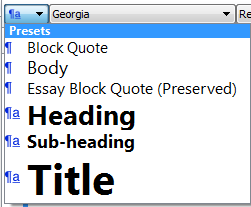 That’s the basics of managing and applying styles in Word. Scrivener is similar in that it comes with presets like Word and you can apply them from the format bar. I’ll discuss these in a later post but for now these should help you learn the basics of formatting for e-books.
That’s the basics of managing and applying styles in Word. Scrivener is similar in that it comes with presets like Word and you can apply them from the format bar. I’ll discuss these in a later post but for now these should help you learn the basics of formatting for e-books.
Have you tried formatting your e-book? What tips or tricks do you use with formatting? Please share your thoughts and ideas in the comments section. I’d also love to connect with you over social media so check my Contact page for that information. See the News page for announcements and remember to sign-up to receive news and posts by email. I’ve added a new sign-up tab on my FaceBook page to simplify the process. New followers can download The Black Bag via free coupon today! Also, the cover of my book, The Bow of Destiny, was revealed recently so take a look.
Follow Blog via Email
Enter your email address to follow this blog and receive notifications of new posts by email.
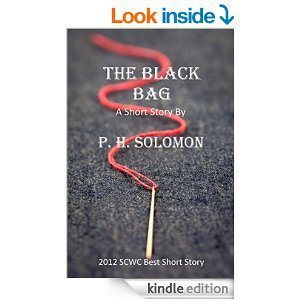
Filed under: Blogging, Cover Reveal, Creativity, Editing, Indie Publishing, Planning, Scrivener, Self-publishing, Social Media, Tech Tips, Templates, Tips, Writing Tagged: blogging, creativity, Editing, Facebook, Formatting, Indie Publishing, P. H. Solomon, Planning, Self-publishing, Smashwords, Styles, The Black Bag, The Bow of Destiny, Tips, Twitter, Word, writing



